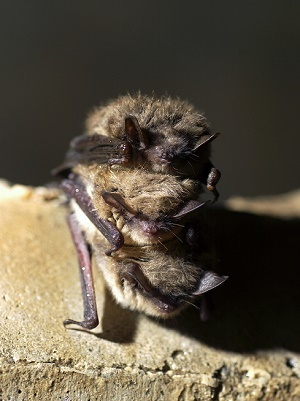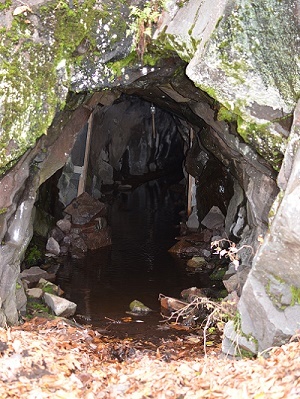|
|
|
|
News Digest - Week of Oct. 21, 2019
Michigan's forests provide dazzling destinations, valuable products, wildlife habitat and more.
|
|
Here's a look at some of this week's stories from the Michigan Department of Natural Resources:
See other news releases, Showcasing the DNR stories, photos and other resources at Michigan.gov/DNRPressRoom.
PHOTO FOLDER: Larger, higher-res versions of the images used below are available in this folder.

Starting next year, Michigan plans to increase chinook salmon stocking by 150,000, increasing the total statewide stocking from 504,000 to 654,000 fish. This move is in response to a recent recommendation of the Lake Michigan Citizens Fishery Advisory Committee to boost lakewide stocking levels.
“The Lake Michigan predator and prey balance has improved in recent years,” said Jay Wesley, the DNR’s Lake Michigan Basin coordinator. “The size of the salmon has also improved, with hundreds weighing more than 30 pounds caught at multiple ports.”
This marks the first salmon-stocking increase in Lake Michigan since 1999. The committee has worked continuously with stakeholders and resource agencies around the lake to bring balance to its ecosystem.
“Although some anglers would prefer a larger stocking increase, biologists are still concerned with the uncertainty of alewife year-class strength and how much wild reproduction of salmon to expect,” Wesley said. “Alewife are the main diet of chinook salmon.”
The Lake Michigan Citizens Fishery Advisory Committee and the DNR will continue to monitor Lake Michigan conditions and adjust stocking accordingly to sustain a healthy, diverse salmon and trout fishery. Visit Michigan.gov/Fishing to learn more about how the DNR manages the state’s fisheries.
Contacts: Jay Wesley, 269-204-7057 or Elyse Walter, 517-599-8532
|

It’s National Forest Products Week, and for just a minute we’d like you to think outside the box. (Unless that box is cardboard, which is itself a wood product made here in Michigan).
Michigan is home to hundreds of mills and manufacturers that create a wide range of wood products as part of the state’s $20.8 billion forest products industry. That industry includes more than 800 logging and trucking firms, 300 primary manufacturers such as sawmills and paper mills, and 1,000 secondary manufacturers that create finished goods.
What do those products include?
If you have a roof over your head, it's probably supported by wooden trusses, made by a handful of Michigan firms.
Like games? Check to see if the burl oak foosball table where you while away your free time with friends was made by the Carrom Sports Co. in Ludington.
Hardwood basketball floors for high schools, colleges, universities and even some NBA teams – not to mention portable floors used in the NCAA Final Four – are made by Connor Sports in the Upper Peninsula town of Amasa.
|

Odds are you’re near some particleboard right now. The wood sheets are used in subflooring, wall partitions and ceilings, and as a core material for doors and in many types of furniture. In 2019, Arauco opened a Grayling facility with the longest particleboard press in North America. The plant employs more than 200.
Like music? Michigan manufacturers are creating drums and tambourines, handcrafted guitars and more items that include wood components.
Hungry for a stack of pancakes? Maple syrup isn’t a wood product, but it does come from trees! Remember that the next time you’re carb-loading at Sunday brunch.
Learn more about the state's forest products industry and how the DNR supports it at Michigan.gov/Forestry.
Questions? Call Kathleen Lavey, 517-284-5852.
|

Whether people find bats spooky or spectacular – or both – there’s no denying that these amazing mammals are an important part of the Michigan landscape. Bat Week, Oct. 24-31, an international annual celebration designed to raise awareness about the need for bat conservation, is the perfect time to examine their many contributions.
Michigan is home to nine different bat species. These insectivores eat many insect pests, such as beetles, moths and flies. Michigan’s bats are nocturnal – meaning they’re active at night – busily consuming tons of insects (which provides nontoxic pest control for agricultural crops).
Despite their benefits, bats are in decline nearly everywhere they are found.
In 2014, white-nose syndrome, a deadly disease affecting North American bats primarily during hibernation, was confirmed in Michigan. Infected bats prematurely awaken from hibernation, rapidly deplete their fat reserves and are unable to survive the winter. Bats with this syndrome often exhibit unusual behavior, like flying during daylight hours or gathering outside of caves in cold weather.
|

The DNR has been working with several researchers on different methods to lessen the effects of white-nose syndrome and protect many of the state’s hibernacula – places like caves or mines where bats seek shelter for winter hibernation.
Residents can give bats a boost, too, by conserving bat habitat (like forested areas near water), erecting a bat house, respecting mine closures and following decontamination guidelines to reduce the spread of white-nose syndrome.
Bats, like all wild animals, should be treated with respect and left alone. However, in situations where a bat has been in close contact with people, it’s best to safely confine the bat, if possible, and contact the local health department to determine if the bat should be tested for rabies. Learn more at Michigan.gov/Rabies.
Explore more bat resources and information at Michigan.gov/Bats.
Questions? Contact the DNR Wildlife Division, 517-284-9453.
|
|
|
Looking for a place to sight in your firearm or pull back a few practice arrows before your next hunt? Visit our shooting ranges webpage for information on locations, amenities and more.
|
|
Get a jump on holiday shopping and do some good for your favorite destinations! Explore Michigan-inspired gift ideas, with proceeds supporting state parks, trails and waterways.
|
|
If you are a teacher or know a teacher who wants to learn more about ways to bring the great outdoors into the classroom, check out our Programs for Educators webpage.
|
|
|
Was this email useful?
 
|
|
|
|